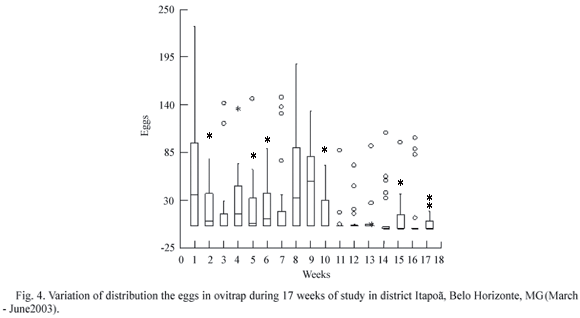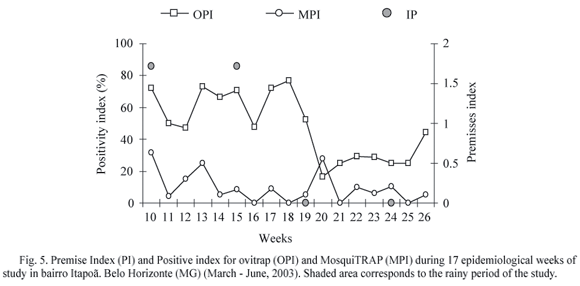MosquiTRAP™ is a sticky trap specifically designed to capture gravid females of Aedes aegypti (L.) and allows the identification of the mosquito in the field during the inspection of the trap. This study aims to compare this sticky trap to larval and ovitrap surveys for field monitoring of A. aegypti during the dry season. The study was conducted from March to June of 2003 in 20 blocks of the district of Itapoã, Belo Horizonte, MG. The traps were monitored every week while the larval survey was conducted on a monthly basis. The larval index: Premise Index (PI) and Breteau Index (BI) had equal values throughout the experiment (1.72 in the first two months and zero in the last two). The container index (CI) during the first two months was 0.09 and 0.1%, respectively and zero in the last two. The Ovitrap Positive Index (OPI) ranged from 16.7 to 76.9%, and the MosquiTRAP Positive Index (MPI) ranged from 0 to 31.5%. The Egg Density Index (EDI) ranged from 26.6 to 82.8, while the Adult Density Index ranged from 0 to 1.6 throughout the experiment. Temperature and rainfall did not affect the Positive and Density Indices, although these environmental variables seemed to have affected the larvae indices. Although the MosquiTRAP caught a low number of Aedes mosquitoes during the study, it was more sensitive than the larval survey to detect the presence of Aedes mosquitoes.
Monitoring; dengue; mosquito








